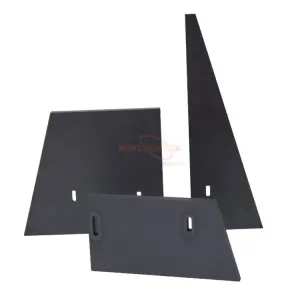
(Keramički prahProducent byWintrustek)
Keramički prahsastoji se od keramičkih čestica i aditiva koji olakšavaju upotrebu za izradu komponenti. Vezivno sredstvo se koristi da bi prah ostao zajedno nakon zbijanja, dok sredstvo za odvajanje omogućava da se sabijena komponenta s lakoćom ukloni iz matrice za sabijanje.
Materijalni primjeri
ALUMINA
Keramika sa hemijskom formulom Al2O3 naziva se glinica. Primarna svojstva ovih prahova su njihova struktura, čistoća, tvrdoća i specifična površina.
ALUMINIJUM NITRID
U industriji poluprovodnika i elektronike, toplotne i električne kvalitete ovih prahova su posebno cijenjene.
HEKSAGONALNI BORNITRID
Heksagonalni bor nitridima dobru električnu izolaciju, toplotnu provodljivost i hemijsku stabilnost.
ZYP
ZYP prah napravljen je od cirkonija koji je stabiliziran itrijum oksidom i predstavlja nevjerovatno fin, visoko reaktivan prah.
Manufacturing Methods
GLODANJE/BRUSENJE
Mljevenje, također poznato kao mljevenje, je metoda proizvodnje keramičkog praha u kojoj se veličina čestica keramičke tvari smanjuje dok se ne pretvori u prah.
TAPE CASTING
Još jedan preovlađujući proces za proizvodnju keramičkih prahova je livenje trake. Koristi se u proizvodnji supstrata integrisanih kola. Osim toga, koristi se u konstrukciji višeslojnih kondenzatora i struktura paketa integriranih kola. Lijevanje se više puta odvija na površini nosača pomoću keramičkog praha, organskog rastvarača i polimernog veziva. Teflon ili neka druga neljepljiva supstanca služi kao noseća površina. Zatim se uz pomoć ivice noža mešavina keramičkog praha (kasta) raspoređuje po glatkoj površini do unapred određene debljine. Nakon sušenja, sloj mješavine keramičkog praha se priprema za obradu.
COMPACT
Keramički prah se ovim procesom pretvara iz svog granularnog stanja u kohezivnije i gušće. Ovim postupkom se zbija keramički prah, kao što i samo ime kaže. Hladno prešanje ili vruće prešanje se može koristiti za kompaktiranje keramičkih čestica.
INJECTION MOLDING
Injekciono prešanje se koristi za proizvodnju keramičkih materijala složene geometrije. Ovaj proces se može koristiti za proizvodnju keramičkih materijala u velikim količinama. Injekciono prešanje je svestran proces. Koristi se i za oksidnu keramiku i za neoksidnu keramiku. Osim toga, vrlo je precizan. Krajnji proizvod brizganja je visokog kvaliteta.
SLIP CASTING
Slip livenje je metoda proizvodnje keramike u prahu koja se obično koristi u grnčarstvu. Obično se koristi za pravljenje oblika koje je teško napraviti pomoću točka. Slip livenje je dugotrajan postupak koji može potrajati i do 24 sata. S druge strane, gotov proizvod je precizan i pouzdan. U Evropi lijevanje datira iz 1750-ih godina, au Kini još više. Suspenzija keramičkog praha omogućava da se spoji kao klizač. Porozni kalup se tada puni kliznom trakom. Kako se kalup suši, formirajući čvrsti sloj od listića.
GEL CASTING
Gel livenje je proces proizvodnje keramičkog praha koji je započeo u Kanadi 1960-ih. Koristi se za stvaranje složenih keramičkih oblika koji su jaki i odličnog kvaliteta. U ovoj proceduri, monomer, umrežavalac i inicijator slobodnih radikala se kombinuju sa keramičkim prahom. Kombinacija se zatim dodaje u suspenziju vode. Da bi se povećala krutost smjese, vezivo koje je već prisutno se polimerizira. Kombinacija se zatim pretvara u gel. Smjesa gela se sipa u kalup i ostavlja da se tamo stvrdne. Nakon stvrdnjavanja, supstanca se uklanja iz kalupa i suši. Gotov proizvod je zeleno tijelo koje se naknadno sinteruje.
ISKLJUČIVANJE
Ekstruzija je proces izrade keramičkog praha koji se može koristiti za oblikovanje materijala u željene oblike. Provlačenje keramičkog praha kroz kalup s određenim poprečnim presjekom. Ovom tehnikom moguća je izrada keramike složenih poprečnih presjeka. Štaviše, ne vrši dovoljno sile na materijale da ih popuca. Konačni proizvodi ovog postupka su jaki i imaju hvale vrijedan sjaj površine. Godine 1797. izveden je prvi postupak ekstruzije. To je počinila osoba po imenu Joseph Bramah. Ekstruzija može biti topla, hladna ili vruća. Na temperaturi višoj od temperature rekristalizacije materijala dolazi do vruće ekstruzije. Topla ekstruzija se odvija iznad sobne temperature i ispod temperature rekristalizacije materijala, dok se hladna ekstruzija dešava na sobnoj temperaturi.


























